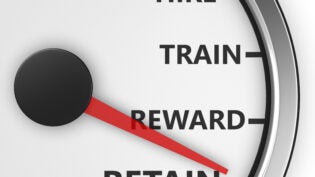
A 2012 Towers Watson study found that in most organizations, only 35 percent of employees said they were engaged. In other words, 65 percent of employees have mentally checked out, causing productivity, innovation, and creativity to plummet.
While this is never good news for employers, the timing could not be more critical, as organizations across the globe continue to struggle to survive. Thought leaders are increasingly calling today’s turbulent business world a “VUCA” environment—one that is volatile, uncertain, complex, and ambiguous. To succeed in this environment, organizations must be more adaptive and agile than ever before—they must be resilient. Organizations that lack resilience—that ability to bounce back after setbacks—are often stressful places to work, a situation in which far too many employers and employees are well versed.
Stress lowers employee performance, productivity, and morale, and strains workplace relationships. People experiencing excessive stress have difficulty managing emotions, focusing attention, making decisions, and thinking clearly. Stress can also result in heart disease, cancer, pain, and depression. Stressed employees are overwhelmed, tired, and disengaged.
Resilient employees, on the other hand, are more engaged and productive, have improved communication, are better team players, and have lower health care costs. And a growing body of research shows that organizations that foster positive attitudes have employees who are more optimistic, creative, and experience lower turnover.
Resilient organizational cultures give all employees—from the CEO down—permission to take care of their physical, mental, emotional, and spiritual needs with the understanding that when these needs are tended to, resilience occurs, and the entire organization benefits through increased productivity, job performance, retention, engagement, and physical well-being. It makes sense, then, that HR and talent management professionals should strive to shift their organizational cultures to one that embraces and fosters resilience.
Steps HR Professionals Can Take to Introduce Resilience into Their Organizations’ Cultures:
- Obtain senior leadership support.
- Build safe and secure work communities.
- Encourage all employees—from the CEO down—to embrace the following tips to increase energy and productivity.
1. Encourage employees to do the most important activity first thing in the morning for no longer than 90 minutes and then take a break.
2. Encourage employees to keep a running list of everything that is on their minds so they can get it off their minds.
3. Ask employees to ask themselves “Is this the best use of my time?” every time they go online. Sometimes it will be. More often, though, it is not. If the answer is no, ask “What is?” Then do it.
4. Encourage employees to systematically train their attention. A simple way is to read more books, preferably good ones.
5. Encourage employees to take a few minutes each day—either just before they leave work or just before they go to sleep—to write down the two or three most important things they want to accomplish tomorrow and when they intend to work on them.
6. Encourage employees to monitor their moods. When demand exceeds capacity, one of the most common signs is increased negative emotions. - Develop policies and practices that empower employees to build resilience and have senior leaders lead by example.
Today, “business as usual” means rapid change, an influx of new technologies, economic turbulence, uncertainty, and ambiguity. To counter this new normal, organizations need employees and leaders who are agile, adaptable, and flexible. In a word, resilient. HR and talent management professionals can help by creating resilient organizational cultures. This will require a fundamental shift in thinking, away from squeezing the most productivity from employees and towards enabling employees to take care of their physical, mental, emotional, and spiritual needs, thereby building resilience.
This excerpt from a white paper by Marion White, director of UNC Executive Development, was originally published by MBA@UNC
Published: September 17, 2013
3448 Views
3448 Views














